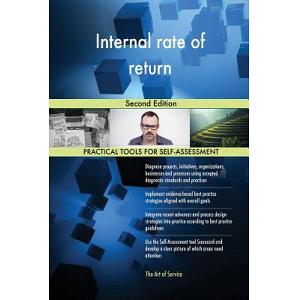Alpha Inc offers a 8% coupon bond with annual payments. The yield to maturity is 6.5% and the maturity date is 12 years. What is the market price of a RM 1,000 face value bond?
Answer:
Given Data
- Face Value (FV): RM 1,000
- Coupon Rate (C): 8% annually
- Yield to Maturity (YTM): 6.5% annually
- Maturity (n): 12 years
Formula
The market price of the bond can be calculated using the following formula:Where:
- is the coupon rate,
- is the face value,
- is the yield to maturity,
- is the number of years to maturity.
Calculation Steps
- Calculate Annual Coupon Payment:
- Calculate Present Value of Coupon Payments:
The present value of an annuity formula can be used here:Plugging in the values: - Calculate Present Value of Face Value:
The present value of a single sum formula is used:Plugging in the values: - Calculate Total Present Value:
Finally, add both present values together to find the market price :
Final Calculation
Calculating these values step-by-step:- Present Value of Coupons:
- Calculate
- Thus,
- Present Value of Face Value:
- Calculate
- Thus,
- Total Present Value:
- Finally,
- Finally,
Machine Trading (MT) Inc. is considering a 3 year project with an initial cost of RM 618,000. The project will not directly produce any sales but will reduce operating costs by RM 265,000 a year. The equipment is depreciated straight – line to a zero book value over the life of the project. At the end of the project the equipment will be sold for an estimated RM 60,000. The tax rate is 34%. The project will require RM 23,000 in extra inventory for spare part and accessories. Should this project be implemented if MT Inc requires a 9 % rate of return? Why or why not?
Answer:
Project Details
- Initial Cost: RM 618,000
- Annual Cost Savings: RM 265,000
- Project Life: 3 years
- Salvage Value at End of Project: RM 60,000
- Tax Rate: 34%
- Required Rate of Return (Discount Rate): 9%
- Additional Inventory Requirement: RM 23,000 (considered as an initial cash outflow)
Steps to Calculate NPV
- Calculate Annual After-Tax Cash Flow:
- Operating savings = RM 265,000
- Tax savings from depreciation:Depreciation = Initial Cost / Project Life = RM 618,000 / 3 = RM 206,000 per year.
- Total annual cash flow after tax:
- Calculate Cash Flows for Each Year:
- Year 0 (initial investment and inventory):
- Year 1 to Year 3:
- Year 3 also includes the salvage value:
- Year 0 (initial investment and inventory):
- Calculate NPV:
The NPV is calculated using the formula:Where is the discount rate (9%).- NPV calculation:
Calculating each term:- Year 0:
- Year 1:
- Year 2:
- Year 3:
- Final NPV Calculation:
Summing these values gives:
Since the NPV is positive (approximately RM 251,716.12), the project is expected to generate more cash than the cost of capital required by MT Inc., making it a worthwhile investment. Therefore, MT Inc should implement this project as it meets their required rate of return of 9%.
Answer:
The Internal Rate of Return (IRR) rule is indeed considered a special case of the Net Present Value (NPV) rule because both methods are used to evaluate the profitability of investments, yet they approach the decision-making process differently.
Relationship Between IRR and NPV
- Conceptual Basis:
- NPV measures the difference between the present value of cash inflows and outflows, discounted at a specific rate (the cost of capital). If NPV is positive, the project is expected to generate value for the company.
- IRR, on the other hand, is defined as the discount rate at which the NPV of an investment equals zero. Thus, if the IRR exceeds the required rate of return, the project is considered acceptable.
- Decision Rule:
- Both rules lead to the same decision when evaluating independent projects: accept if NPV > 0 or IRR > required rate. However, IRR can be seen as a derived measure from NPV since it essentially finds the rate that makes NPV zero.
Limitations of IRR Compared to NPV
Despite their similarities, IRR has notable limitations that make NPV generally preferred in capital budgeting:- Multiple IRRs:
- Projects with non-conventional cash flows (i.e., alternating positive and negative cash flows) can yield multiple IRRs, complicating decision-making. This ambiguity does not occur with NPV, which always provides a single value indicating project viability
- Reinvestment Rate Assumption:
- IRR assumes that all cash inflows are reinvested at the same rate as the IRR itself, which may not be realistic. In contrast, NPV assumes reinvestment at the firm's cost of capital, providing a more conservative and often more accurate reflection of potential returns
- Sensitivity to Cash Flow Timing:
- Different cash flow patterns can lead to conflicting decisions between NPV and IRR when comparing mutually exclusive projects. For instance, a project with higher early cash flows might show a higher IRR but lower NPV compared to another project with delayed cash flows
- Magnitude of Returns:
- While IRR provides a percentage return, it does not account for the scale of investment or total value generated by a project. A project with a lower IRR but significantly higher absolute cash flows might be more beneficial than one with a higher IRR but lower overall returns
While both IRR and NPV serve as valuable tools in investment appraisal, they have fundamental differences in their calculations and implications. The IRR rule is effectively a special case of the NPV rule because it derives from setting NPV to zero; however, its limitations—such as multiple solutions and unrealistic reinvestment assumptions—make NPV a more reliable method for assessing project viability. Consequently, financial analysts often prefer using NPV for its clarity and consistency in decision-making processes.


No comments:
Post a Comment